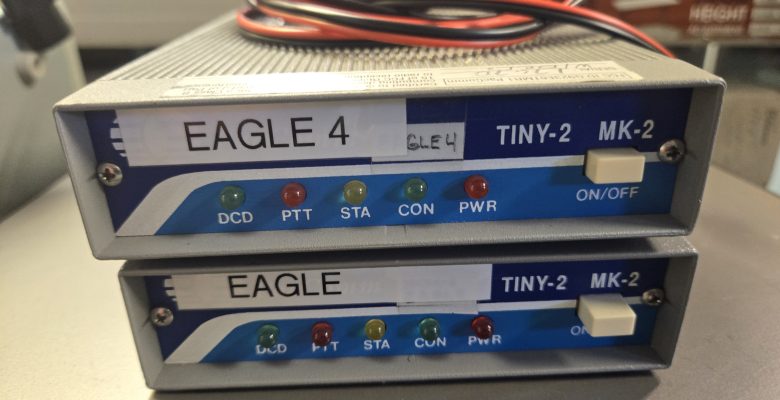EAGLE and EAGLE4 Packet Nodes Off the Air
For the local packet radio enthusiasts, we regret to report that we’ve been forced to take the EAGLE and EAGLE4 packet nodes off the air.
EXPLANATION…..
The EAGLE (145.01 MHz) and EAGLE4 (440.05 MHz) Packet nodes have been in place since sometime in 1996. The nodes operate on “TheNET X1J4” software. These two nodes are physically interconnected at the site.
These nodes, as well as the 30/90 repeater at Site Summit, were operated by PARKA (Polar Amateur Radio Klub of Alaska) under callsign KL7ION. From a practical perspective, the Anchorage ARC has maintained the site equipment for years, and in early 2024, PARKA made the decision to formally transfer all equipment and site operation to the Anchorage ARC.
As such, the Anchorage ARC had a duty to update the equipment at the site so that it identified with the proper callsign, KL7AA. In June of this year, we made a visit to the site to reprogram the 30/90 repeater so that identified itself as KL7AA on the air. During that visit, we investigated the packet nodes as described here in an effort to develop a plan to reprogram the identification of those two nodes on the air as well.
The issue at hand is that the KL7ION callsign actually expired on 8/24/2024. We needed to take prompt action to reprogram the nodes. We went to the site a few days ago to attempt to do so but were met with an absolute inability to communicate with the nodes via a hard serial connection. We had believed that simply connecting to the nodes with a computer and serial connection would allow us to issue the “mycall” commands to change the station callsigns. Alas, if only it were that easy. As it turned out, we could not access either of these nodes via a serial connection. Since the KL7ION callsign is expired, we felt we had no choice but to pull these 2 stations off the air and to bring the PacComm Tiny 2 TNCs that they run on back to the RSOC for more troubleshooting.
The bad news….
It turns out that these TNCs run “TheNET X1J4” software. Corporate knowledge of how this works has long since departed the area, but I did make contact with Jerry Curry, KL7EDK, in Fairbanks. As it turns out, Jerry is still running a couple of these nodes. He quickly understood our problem and reported that we were effectively “dead in the water”. The “TheNet X1J4” software is actually run from an EPROM installed in the TNC. The callsign and most other important information is “burned” into the EPROM. There is no way to issue a simple command to change the callsign. The EPROM would need to be reprogrammed. The Anchorage ARC has no EPROM burner, nor the expertise with this outdated software to make an update. Further, while this software does indeed have a lot of power, the only feature that is effectively utilized is the “chat” feature which basically allows for round table discussions via packet.
At this time we are weighing our options. It is likely that we will install a Kantronics KP3+ TNC running as a KaNode but this has yet to be determined. Also, it is likely that this node would operate only on the 145.01 MHz frequency due to hardware and interference considerations at the site.
We don’t have a lot of time until the snow flies so we hope to have SOMETHING reinstalled at the site before it does.
If anyone is an EPROM God/Godess or knows more about how to manipulate a TheNET X1J4 on PacComm Tiny 2 TNCs and would like to get their hands on these units to see if they could indeed be reflashed, please reach out to us at info@kl7aa.org
Sorry for the bad news.
73,
Kent, KL5T
